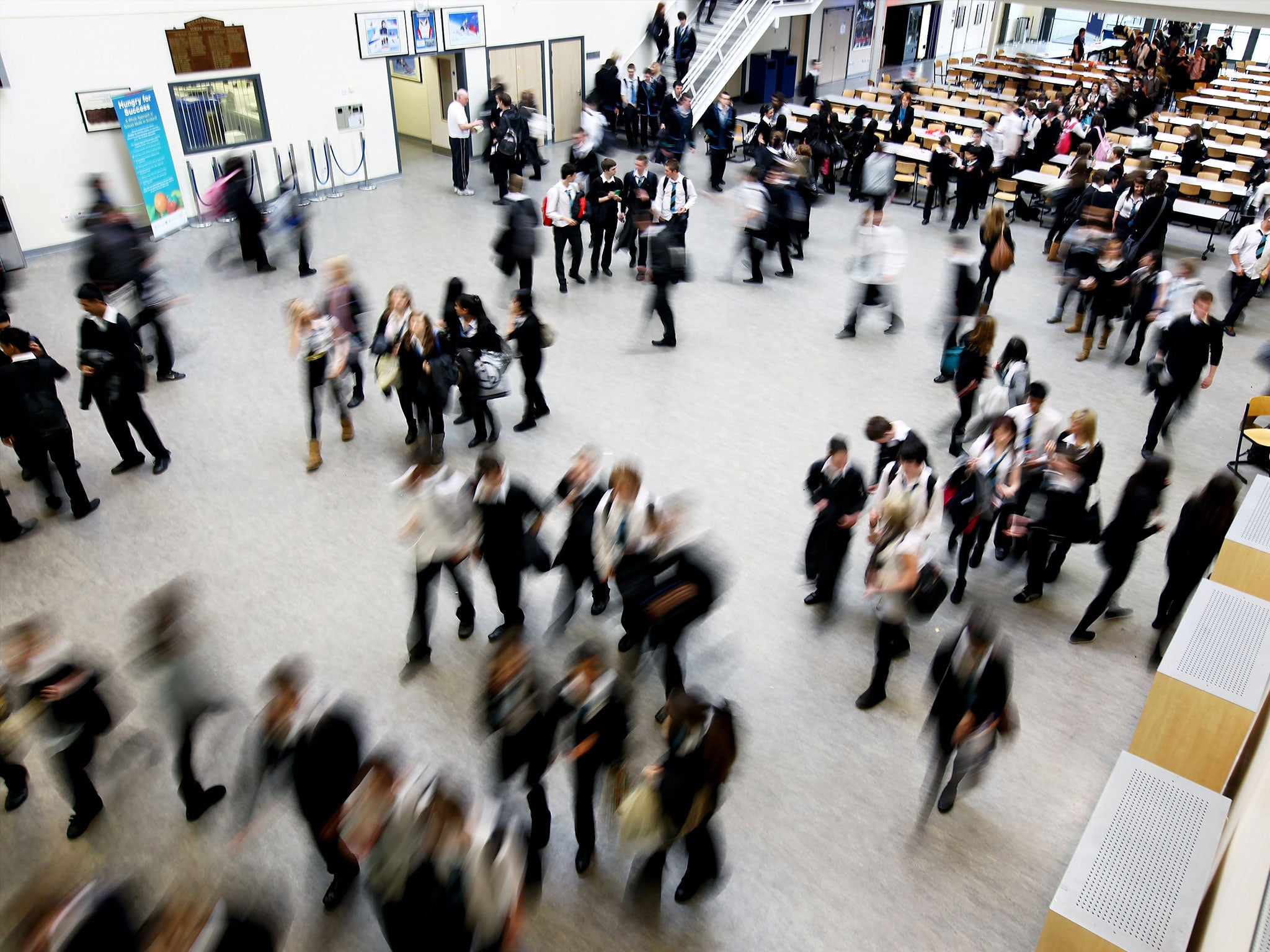Government claim that more pupils at good or outstanding schools than before is ‘misleading’, report suggests
Growth in population and infrequent Ofsted inspections skewing statistics, warns think tank

Your support helps us to tell the story
From reproductive rights to climate change to Big Tech, The Independent is on the ground when the story is developing. Whether it's investigating the financials of Elon Musk's pro-Trump PAC or producing our latest documentary, 'The A Word', which shines a light on the American women fighting for reproductive rights, we know how important it is to parse out the facts from the messaging.
At such a critical moment in US history, we need reporters on the ground. Your donation allows us to keep sending journalists to speak to both sides of the story.
The Independent is trusted by Americans across the entire political spectrum. And unlike many other quality news outlets, we choose not to lock Americans out of our reporting and analysis with paywalls. We believe quality journalism should be available to everyone, paid for by those who can afford it.
Your support makes all the difference.A government claim that more pupils in England attend “good” and “outstanding” schools now than eight years ago is skewed by a growth in population and infrequent Ofsted inspections, a leading education think tank has warned.
Ministers should ditch the “misleading” claim that 1.9 million more children are being taught in better education facilities than in 2010, a paper from the Education Policy Institute (EPI) said.
The report, by a former Department for Education (DfE) civil servant, said more than a quarter of the rise could be accounted for by a growth in pupil numbers and a shift in schools they attend.
And 579,000 pupils attend schools rated as “good” or “outstanding” which have not been inspected since at least 2010 – with 124,000 pupils in schools that have not been inspected in 10 years.
The analysis, from Jon Andrews, also found that this included 309,000 pupils in schools which have converted to academies and have never been inspected in their current form.
It comes after Ofsted revealed earlier this year that hundreds of schools in England rated as outstanding have not been inspected for at least a decade.
Mr Andrews, director for school system and performance and deputy head of research at the EPI, said: “For government statisticians, lines to take can be a challenge. They need to be something that gets the point across quickly and be something that ministers actually want to say. But at the same time you’ve probably got a long list of caveats and explanatory notes that you’d love to use.
“And of course, it is absolutely essential that your statistics are not misleading. While it is easy to be cynical from the outside, statisticians in government take that incredibly seriously.
He added: “That is why we now really need to stop hearing DfE’s favourite statistic. There are unlikely to be many in education circles who are unaware that ‘there are now 1.9 million more children in good or outstanding schools than there were in 2010’. The department frequently claims that the increase is due to the reforms put in place since 2010. It is difficult to see what reforms they are attributing to them to – given that it would mean improvements for a quarter of the school population.
“For example, the large structural reforms, through the expansion of the academies programme and the introduction of free schools, have so far resulted in little or no impact on overall attainment. The trends in the increase pre-date the introduction of the new national curriculum and new GCSEs.
“Given what we know about the impact of reforms so far, ministers and the department should ask themselves ‘is this scale of improvement plausible?’ If the answer is no, it is time to ditch their favourite line.”
Angela Rayner, Labour’s shadow education secretary, agreed that it was time for ministers to “abandon this misleading soundbite”.
“Their structural reforms have so far had virtually no impact on overall attainment, and they should be honest with parents across the country instead of trying to pull the wool over their eyes.
“The next Labour government will create a good school place for every child as part of a National Education Service for the many, not the few,” she said.
A DfE spokesperson said: “The facts are clear – the vast majority of pupils are in good or outstanding schools across the country, 1.9 million more than in 2010, and an increase from 66 per cent to 86 per cent over that time.
“Academic standards continue to rise, with more pupils reaching the expected standard in maths at the end of primary school and 154,000 more six year olds on track to become fluent readers since the phonics check was introduced in 2012.”
Join our commenting forum
Join thought-provoking conversations, follow other Independent readers and see their replies
Comments